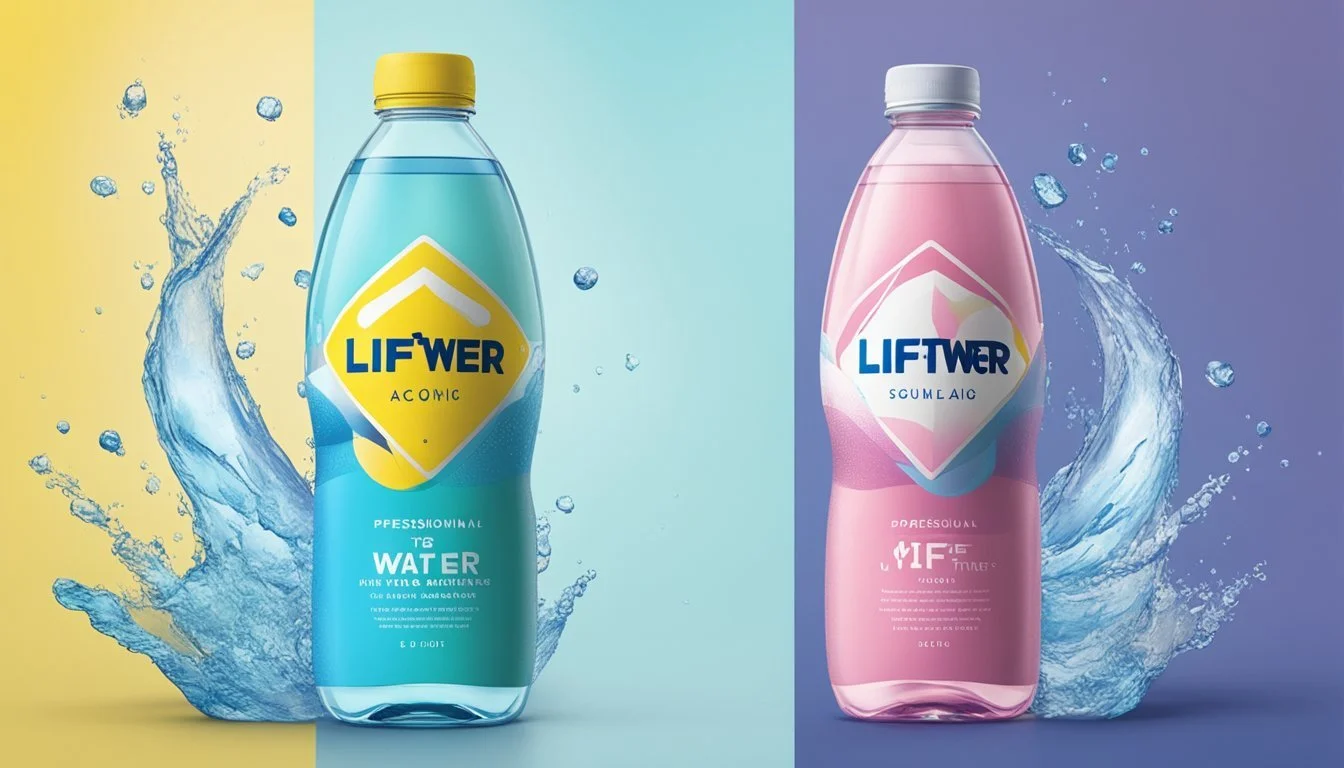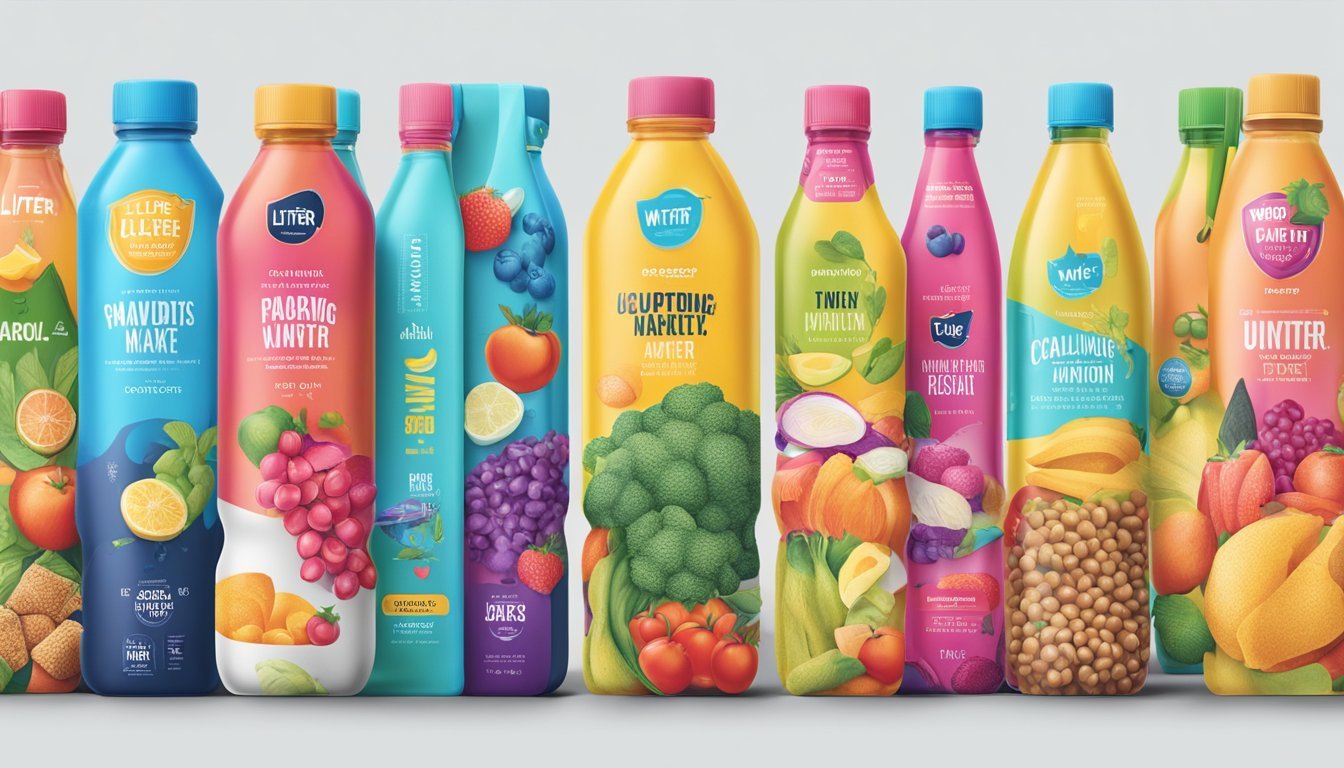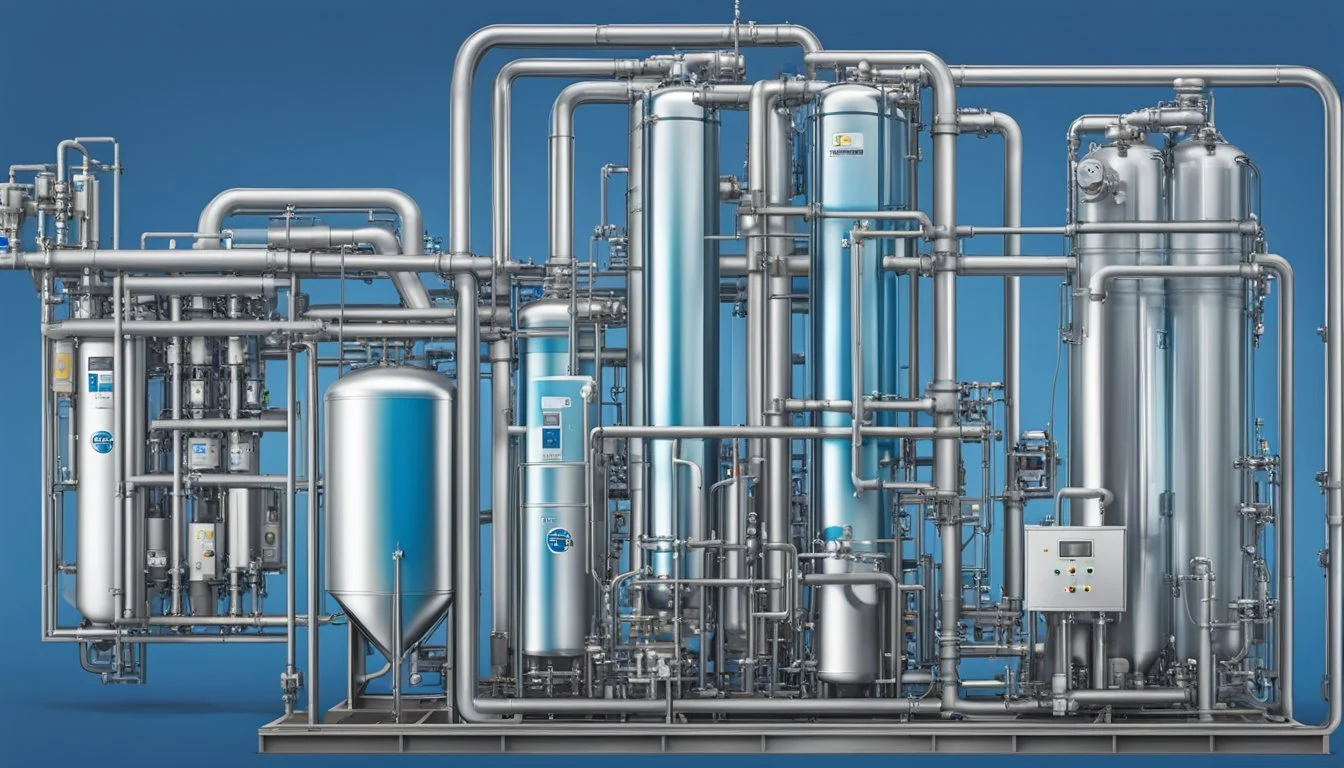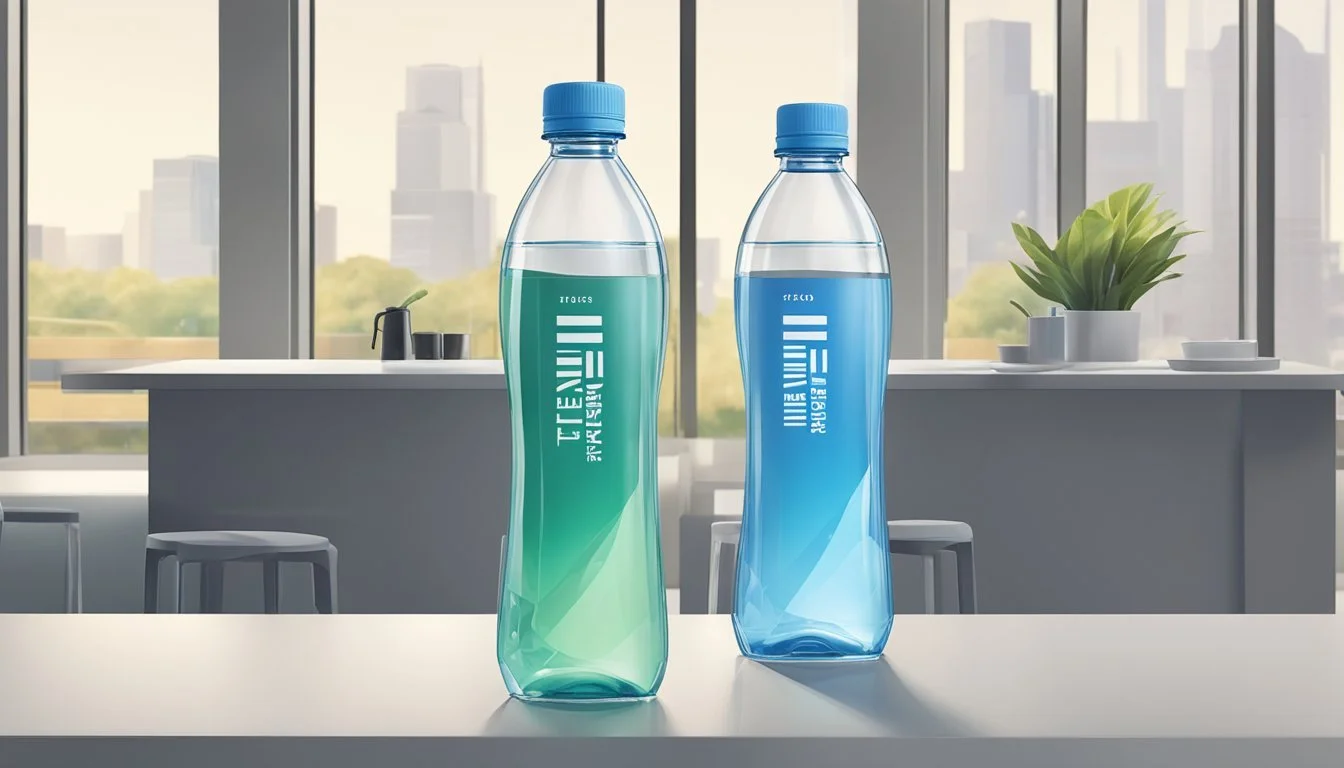LIFEWTR vs. Action
A Comparative Review of Bottled Water Brands
When it comes to choosing between LIFEWTR and Action bottled water, consumers often find themselves pondering which option stands out in terms of purity, taste, and overall value. LIFEWTR is known for its pH-balanced profile, typically ranging from 6.4 to 7.4, and is marketed as a premium option that enhances the drinking experience with added electrolytes. This balance aims to provide a crisp and neutral flavor that appeals to a wide audience.
Action, on the other hand, boasts a different set of features aimed at health-conscious consumers. Often enriched with minerals and occasionally touted for its alkalinity, which some believe aids in hydration and overall health, Action makes a strong case for being more than just ordinary bottled water. For those seeking a slightly alkaline water, Action may offer benefits that LIFEWTR does not explicitly provide.
The core competition between these two brands boils down to personal preference and the specific benefits each water offers. Some might appreciate the artistic packaging and balanced taste of LIFEWTR, while others are drawn to the health-focused attributes of Action. This comparison aims to dissect these differences meticulously to guide you in making an informed choice.
Assessing the Market: Major Players and Brands
The bottled water market is highly competitive, populated by well-known brands such as LIFEWTR and Action. Major corporations like PepsiCo, Coca-Cola, and Nestlé dominate this space, each offering distinct product lines aimed at addressing consumer preferences for quality, taste, and purity.
Brand Overview: LIFEWTR
LIFEWTR is a premium bottled water brand owned by PepsiCo. It is marketed as purified water with a balanced pH and added electrolytes for taste.
LIFEWTR positions itself higher-end compared to other PepsiCo brands like Aquafina. The water contains minerals like magnesium, sulfate, and potassium bicarbonate. The packaging is also distinctive, featuring artistic designs that appeal to a more upscale market segment.
PepsiCo leverages its extensive distribution network to ensure LIFEWTR is widely available. The brand competes directly with other premium offerings from Coca-Cola such as Smartwater and Dasani, as well as niche brands like Voss and Evian.
Brand Insights: Action
Action is an emerging brand in the premium bottled water market. Known for its commitment to purity, Action sources its water from natural springs. The brand emphasizes minimal processing to maintain the natural minerals inherent in the source.
Action's marketing highlights its eco-friendly practices, focusing on sustainable sourcing and recyclable packaging.
Though not as widely recognized as LIFEWTR, Action has carved out a niche with health-conscious consumers and those concerned with environmental impact. Its focus on quality and sustainability allows it to compete with established brands like Fiji Water and Evian.
Comparative Analysis of Water Brands
When comparing LIFEWTR and Action, multiple factors merit consideration: source, taste, purity, and price.
LIFEWTR is purified and enriched with electrolytes, appealing to consumers looking for enhanced hydration. Its pH levels typically range from 6.4 to 7.4, making it slightly acidic to neutral.
Action differentiates itself by offering spring water with natural mineral content, catering to those seeking less processed water. Both brands prioritize premium packaging, with LIFEWTR featuring artistic designs and Action focusing on recyclable materials.
In pricing, LIFEWTR tends to be somewhat more expensive due to its branding and added electrolytes. On the other hand, Action positions itself as a quality yet eco-friendly option, which may come at a premium compared to mainstream brands like Nestle Pure Life and Aquafina.
Water Quality and Composition
When comparing LIFEWTR and Action bottled water, it is crucial to examine their water quality, focusing on factors like pH levels, alkalinity, electrolytes, and minerals. These elements influence both the health benefits and the taste of the water.
Understanding pH and Alkalinity in Bottled Water
The pH level of water measures its acidity or alkalinity on a scale from 0 to 14. LIFEWTR typically has a pH range of 6.4 to 7.4, making it slightly acidic to neutral. Action water, on the other hand, often boasts a higher pH level, usually above 7, placing it in the alkaline category.
Alkaline water is sought after for its potential health benefits, such as neutralizing stomach acid and enhancing hydration. Consumers looking for higher alkalinity might prefer Action water due to its elevated pH levels.
pH Balance is significant for maintaining bodily functions, making the choice of water pH a personal preference depending on one’s needs and health objectives.
The Role of Electrolytes and Minerals
Electrolytes and minerals play a critical role in hydration and bodily functions. LIFEWTR is fortified with electrolytes to enhance taste and provide essential minerals that the body needs. These typically include calcium, potassium, and magnesium.
Action water also includes a range of electrolytes and minerals, often focusing on sodium, potassium, and other trace minerals to support hydration and overall health.
Calcium helps in bone health, potassium aids in muscle function, while sodium maintains fluid balance. Consumers who seek water with balanced electrolytes and added minerals may find LIFEWTR and Action water beneficial, each offering a unique blend tailored to hydration and health.
LIFEWTR and Action provide detailed labeling of their electrolyte and mineral content, ensuring transparency and helping consumers make informed choices based on their dietary and health needs.
Health Considerations and Benefits
When choosing between LIFEWTR and Action bottled water, it's essential to consider the health implications, including hydration, body function, and the potential impact of additives.
Hydration and Body Function
Hydration plays a critical role in maintaining muscle function, nerve signaling, and overall fluid balance. Both LIFEWTR and Action offer hydration that aids these body functions effectively.
LIFEWTR typically has a pH level between 6.4 and 7.4, close to neutral, which can be beneficial for maintaining body homeostasis. It’s considered slightly acidic to neutral, which makes it suitable for most consumers.
Action focuses on delivering pure hydration with no flavors or added sugars. This ensures that consumers are only getting water without any extra ingredients that could impact hydration negatively. Ideal for maintaining optimal hydration, it supports bodily functions without the risk of consuming unwanted additives.
Assessing the Impact of Additives
The presence and type of additives in bottled water can influence its health benefits. LIFEWTR sometimes includes electrolytes, which support fluid balance and muscle function. Specifically, electrolytes like potassium and magnesium help in maintaining proper muscle contractions and nerve signaling.
Action water, on the other hand, prides itself on being free from any additives and sugars. This means there's no risk of added flavors or sweeteners impacting health negatively. For those seeking pure hydration without any interference from additives, Action provides a straightforward, clean drinking experience.
While additives can provide extra benefits in some scenarios, consumers might prefer Action if they are looking for minimal ingredient interference in their hydration sources.
Purification and Filtration Processes
When comparing LIFEWTR and Action bottled water, understanding their purification and filtration processes is crucial. These methods ensure the water's safety, enhance its purity, and maintain its taste.
Reverse Osmosis and Other Filtration Technologies
Reverse osmosis is a key technology used in water purification. It removes contaminants by pushing water through a semipermeable membrane. LIFEWTR employs this method to ensure high levels of purity.
In addition to reverse osmosis, LIFEWTR utilizes other filtration methods like activated carbon filters. These filters effectively remove chlorine, sediments, and other impurities, resulting in clean, crisp water.
Action water also uses a multi-stage filtration process that includes sediment filtration and carbon filtration. Both brands focus on reducing contaminants, ensuring the water remains free from impurities.
Vapor Distillation and Purity
Vapor distillation is another process used to achieve purity, especially in brands like Smartwater. This method involves heating water to create steam and then condensing it back into a liquid.
While LIFEWTR does not use vapor distillation, it emphasizes its purification process that adds electrolytes for taste. This contributes to a balanced pH and a clean flavor profile.
Essentia water, known for its high alkaline pH, also utilizes purification techniques that enhance purity. These techniques ensure that the water remains free from contaminants and boasts a distinct taste.
Ensuring Safe Drinking Water: Regulatory Standards
Both LIFEWTR and Action adhere to stringent regulatory standards set by authorities like the Environmental Protection Agency (EPA). These standards mandate the removal of harmful substances and the inclusion of essential minerals.
LIFEWTR undergoes regular quality checks to comply with these standards. The brand ensures that its purification process meets industry benchmarks, guaranteeing safe drinking water.
Action water similarly follows all necessary regulations, ensuring its water is both safe and high in quality. Compliance with these standards is crucial for maintaining consumer trust and delivering a consistently pure product.
Environmental and Sustainability Factors
Evaluating bottled water brands like LIFEWTR and Action requires analyzing their environmental footprint, packaging methods, and water sources. These elements play a crucial role in determining their impact and sustainability efforts.
The Eco-Footprint of Bottled Water
The production and distribution of bottled water contribute significantly to environmental degradation. Plastic bottles are a major concern due to their non-biodegradable nature. Every year, millions of plastic bottles end up in landfills and oceans, causing severe harm to wildlife and ecosystems.
Action aims to reduce its carbon footprint by optimizing its supply chain and using renewable energy sources in its production facilities. In contrast, LIFEWTR focuses on reducing emissions and waste throughout its manufacturing and distribution processes. Both brands assert their commitment to environmental sustainability, although their methods and effectiveness may vary.
Sustainable Packaging Solutions
LIFEWTR uses 100% recyclable plastic bottles, promoting BPA-free packaging to ensure consumer safety and reduce health risks. Despite being recyclable, plastic still brings up concerns about its environmental impact due to inefficient recycling systems.
On the other hand, Action utilizes innovative packaging solutions. They take pride in biodegradable bottles made from plant-based materials. This approach minimizes waste and accelerates decomposition, making it a more eco-friendly option.
Both brands are dedicated to creating sustainable packaging solutions, but Action's strategy of using plant-based materials may offer a greener alternative compared to traditional plastic.
Sourcing: Natural Springs Vs. Municipal Supplies
The source of water is another critical factor in the sustainability of bottled water brands. LIFEWTR sources its water from municipal supplies, which undergo rigorous filtration and purifying processes to ensure quality and safety. This method leverages existing water resources without additional stress on natural ecosystems.
In contrast, Action prioritizes sourcing from natural springs, ensuring the natural mineral content remains intact. Using natural springs can sometimes pose a risk to the environment due to potential over-extraction, affecting local ecosystems and water tables. However, Action claims to follow stringent guidelines to maintain sustainability.
Both brands provide quality water, but their sourcing methods reflect different environmental priorities. Using municipal supplies may offer a more sustainable approach, while drawing from natural springs seeks to preserve the water's natural characteristics.
Design and Consumer Experience
Design plays a crucial role in the appeal of bottled water, impacting both aesthetics and usability. Both LIFEWTR and Smartwater invest significantly in their product design and packaging to enhance consumer experience.
Product Aesthetics and Functional Design
LIFEWTR emphasizes art and creativity. The brand collaborates with various artists to create unique, vibrant labels for its bottles. This approach makes each LIFEWTR SKU a visual standout on store shelves, often seen as a collector's item by consumers.
Smartwater, on the other hand, opts for a sleek, minimalist design. Its clear bottle and simple, blue label convey purity and cleanliness, aligning with its brand promise of a crisp and pure taste.
Both brands use ergonomically shaped bottles for a comfortable grip. While LIFEWTR's design focuses more on visual art, Smartwater aims for a subtle, elegant look, appealing to those who prefer a straightforward aesthetic.
Packaging Innovations and Accessibility
LIFEWTR integrates functionality with innovation. The brand offers several sizes, making it versatile for different needs. The innovative flip-top caps on some LIFEWTR Pro models add convenience for on-the-go hydration.
Smartwater’s packaging is equally thoughtful, embedding clever design elements like the sports cap on its Smartwater Pro SKUs. This feature is preferred by athletes and those seeking one-handed operation during activities.
Both brands consider environmental impact. LIFEWTR bottles are 100% recycled plastic, promoting sustainability. Smartwater also focuses on eco-friendly packaging, contributing to a reduced carbon footprint. These efforts resonate with eco-conscious consumers.
Evaluating Taste Profiles
When comparing LIFEWTR and Action water, it is essential to examine their taste profiles and understand the nuances that each brand offers. This section focuses on the expertise of water sommeliers and the distinct flavor differences between these two bottled waters.
Water Sommelier: The Art of Tasting Water
Water sommeliers use a refined palate to assess the subtle complexities of different waters. They consider factors such as mouthfeel, mineral content, and the flavor profile.
LIFEWTR is often noted for its crisp and clean taste, a result of its slightly alkaline pH level and balanced blend of minerals. This delicate balance gives it an appealing smoothness.
Action water, known for its purity, often lacks the distinct mineral taste found in other bottled waters. This can result in a more neutral and straightforward flavor, appealing to those who prefer a minimalistic taste.
Flavor Differences Between Brands
LIFEWTR's taste profile includes a slight hint of minerals like calcium and magnesium, providing a smooth and refreshing experience. This blend enhances the water without overwhelming the palate, making it a popular choice for those seeking a balanced flavor.
Action water, on the other hand, emphasizes purity and minimalism in taste. It avoids additional minerals, resulting in a clean and straightforward flavor. This neutrality can sometimes make it less noticeable but preferred by those who want a simple hydration experience without any added taste.
The subtle mineral presence in LIFEWTR and the clean, unembellished taste of Action highlight how different processes and ingredient choices can create unique drinking experiences.
More About LIFEWTR
Icelandic Glacial vs LIFEWTR: Which Bottled Water is Better?
LIFEWTR vs Kirkland Signature: Which Bottled Water is Better?
LIFEWTR vs Mountain Valley Spring Water: Which Bottled Water is Better?
LIFEWTR vs Richard's Rainwater: Which Bottled Water is Better?
LIFEWTR vs Whole Foods Italian Still Mineral water: Which Bottled Water is Better?





